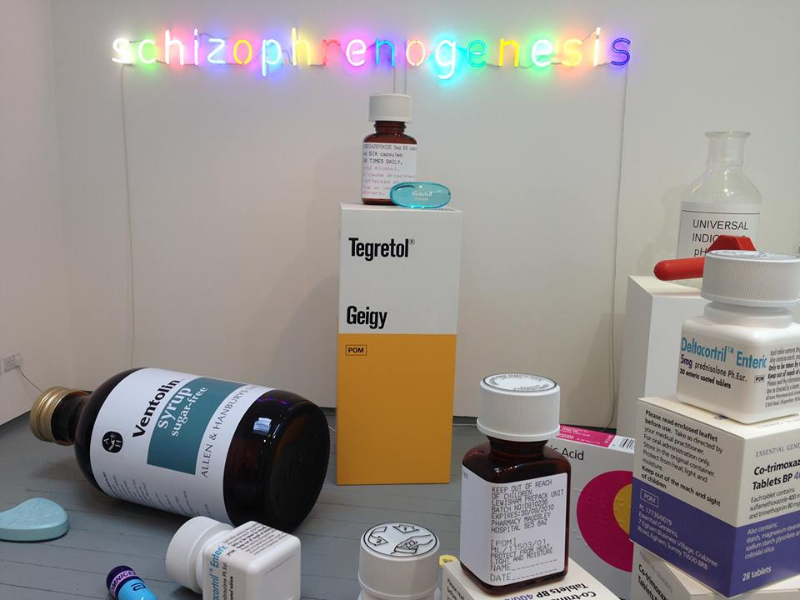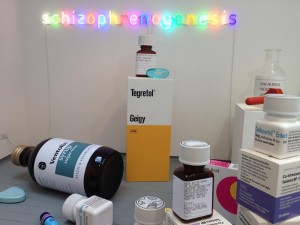Damien Hirst: Schizophrenogenesis at Paul Stolper Gallery

An Alice in Wonderland display of oversized medicine bottles, drug packages, pills, syringes and a scalpel – not the typical sculptures one expects to see at an exhibition. Yet credit the installation currently on show at Paul Stolper Gallery with Damien Hirst and it makes more sense. The artist renowned for his sometimes controversial work, challenging contemporary mainstream culture, has delivered yet another intriguing exploration of human experience, this time focusing on the aesthetics of pharmaceutical products and our relationship with science and health.
Visitors are welcomed with rows of medicinal pills of varying shapes, textures and sizes. The enticing colours prescribed for each is immediately striking; they are seductive and alluring with clean edges and immaculate sheen. Their appeal mirrors that of the real life pill that promises to help us, make us feel better. As Hirst himself explains: “Pills are a brilliant little form, better than any minimalist art. They’re all designed to make you buy them…”
A wall of thirty brightly coloured prints called The Cure presents a similarly attractive view of the basic pill, brought to life in a variety of eye catching candy colours. One could easily take these tiny colourful pills to be nothing more than innocent substances. But seduction is a powerful force and Hirst effectively pulls us into the false sense of the pill’s purity, much like the pharmaceutical industry has done.
The highlight of the display is the crowning three-metre neon sign Schizophrenogenesis with each letter given a striking individual colour. Again the effect is appealing to the eye, teasing us with the feeling that we are somewhere safe, a beacon suited to a place of enjoyment. But perhaps too a warning sign. Below Hirst has adorned the floor with medicine bottles, boxes and syringes that all play with the concept of scale, the tallest measuring one and a half metres. A large scalpel rests against the wall, it seems almost toy-like in its stance, and the effect of this manipulation of scale gives a wonderful playground feel for humourless medicinal products that have become strong proponents in our search for youth, health, and happiness – our crutch in the whirlwind of modern day life.
Each piece in the display radiates a confident aesthetic; Hirst has succeeded in exploring the contrast of appeal and wonder with the underlying manipulation of the pharmaceutical world. It’s a vibrant take on our psychological relationship with medicine and well worth a viewing.
Emma Brady
Schizophrenogenesis is at Paul Stolper Gallery until 15th November 2014, for further information visit here.

























Facebook
Twitter
Instagram
YouTube
RSS